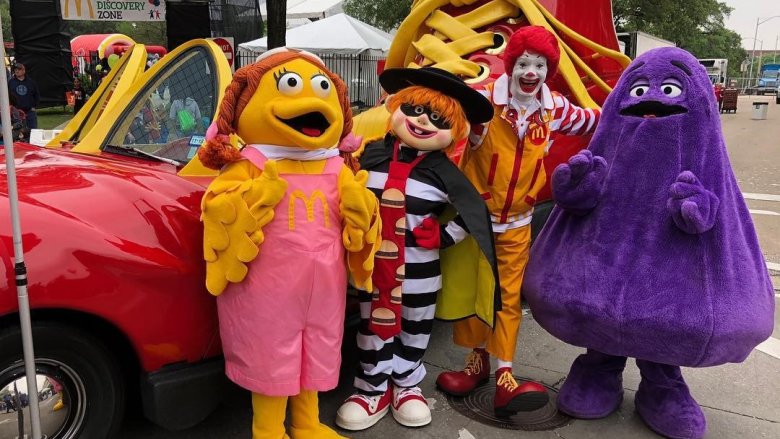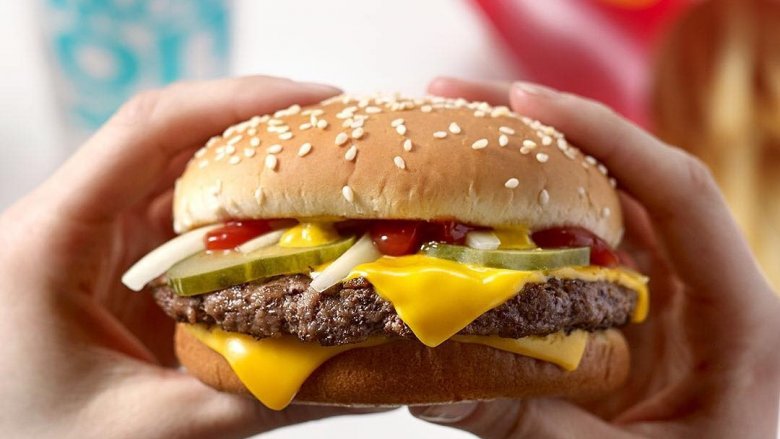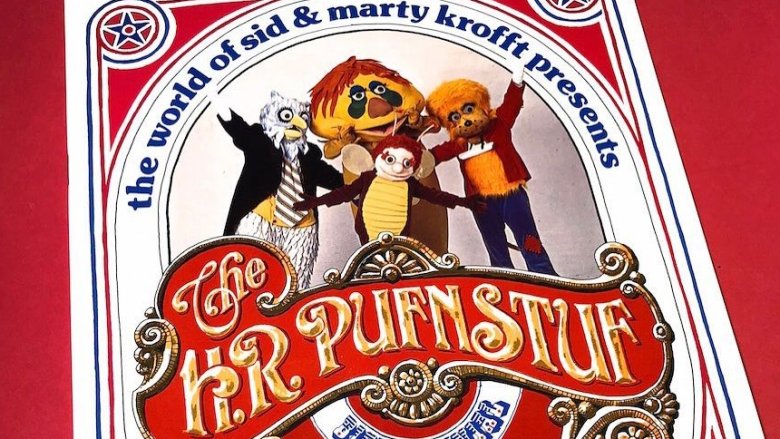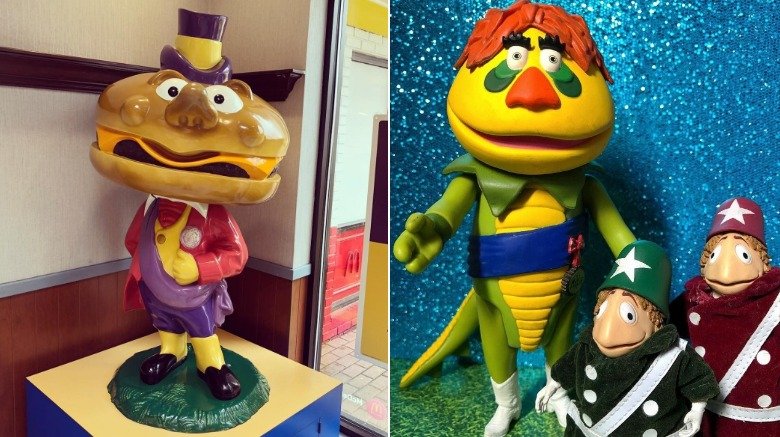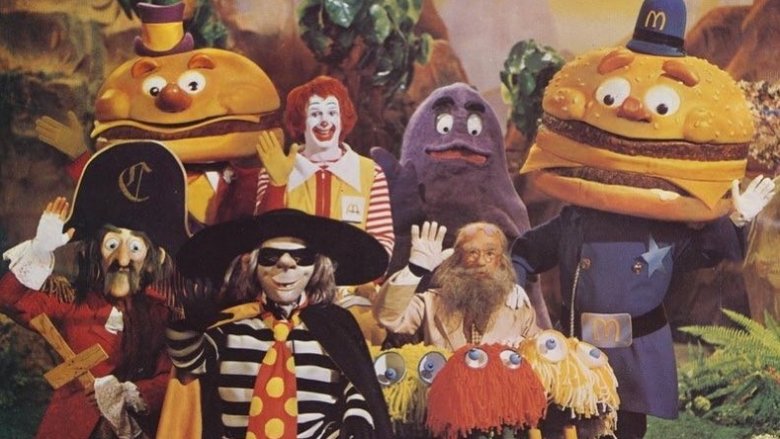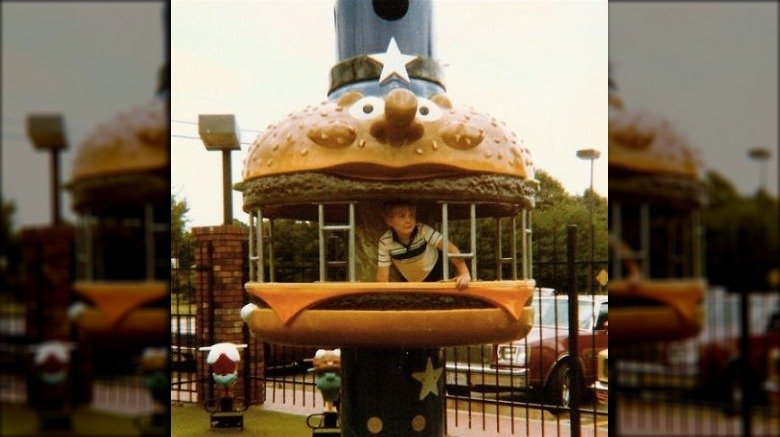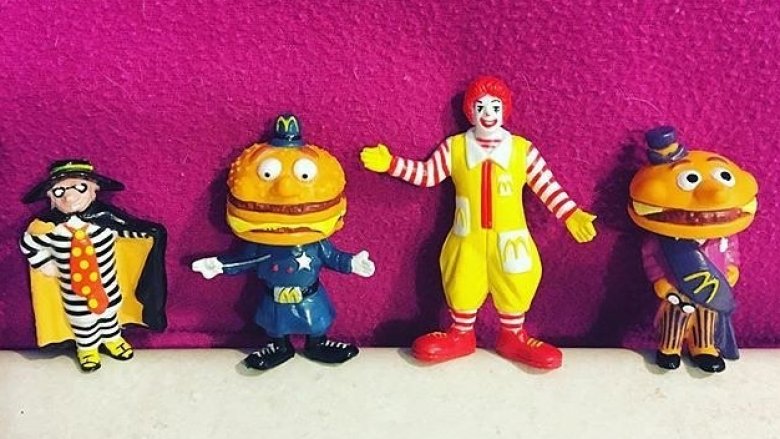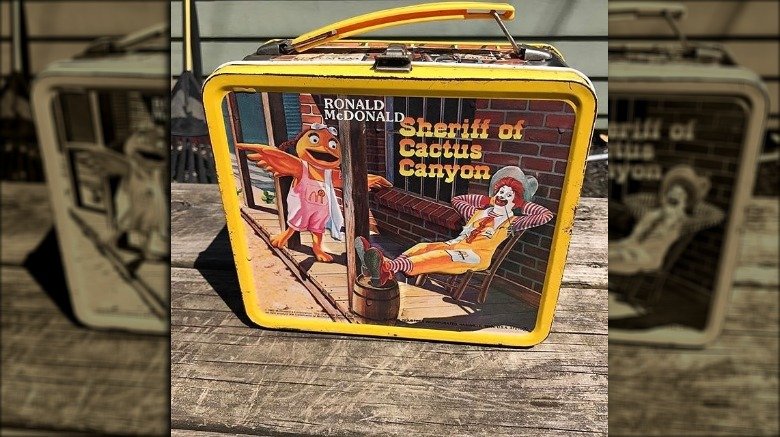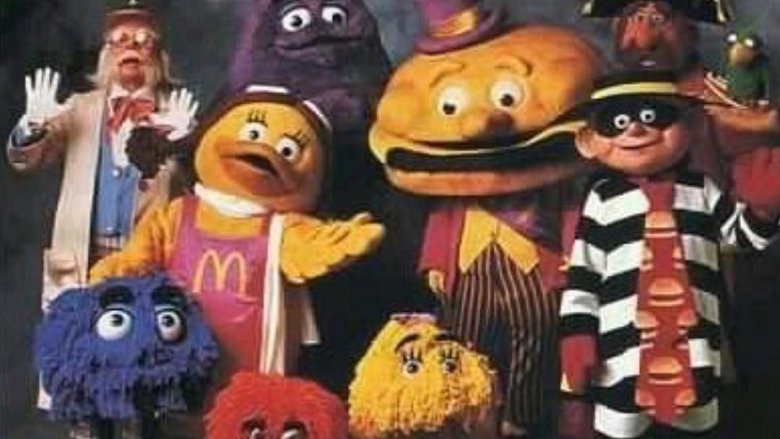How McDonald's Stole Their McDonaldland Characters
Anyone who grew up in the 1980s or '90s remembers the McDonaldland advertisements and — more importantly — those epic (but dangerous) playgrounds themed around the magical fantasy world inhabited by Ronald McDonald, his friends, and hamburgers that were way, way too happy about the prospect of being eaten.
The campaign made McDonald's not just a fast food chain, but an entire experience. There was Hamburglar and Grimace, there were Fry Guys, and there was a cheeseburger-headed mayor and police officer. And it's those last characters that were really a problem, because they were sort of a dead giveaway that McDonald's had essentially stolen the entire idea for their fantasy land. Everything from the feel of the world to some of the character designs was lifted right out of one of the biggest kids' television shows of the late 1960s. If you think that's the kind of thing that doesn't go unnoticed, you're right.
That's the sort of stuff they don't tell you when you're a kid, so let's talk about the whole shady saga right now.
How McDonaldland started
The 1970s were sort of a golden age of advertising, especially when it came to children. According to AdAge, children had been targeted by advertising for a long time, and in 1968 the Action for Children's Television was established to keep a close eye on what was becoming a hugely controversial practice.
It's in that era — the same time that gave birth to advertising campaigns like the Kool-Aid Man — that McDonald's developed the idea of a mass-marketing campaign that wasn't just commercials, but a whole universe of characters kids could play with after seeing them on TV. It was pretty brilliant, and Mental Floss says this idea made McDonald's a household name and established a massive fan base that would love them for decades. McDonaldland meant that there were a ton of kids out there who had fond memories of the place, and who grew up to take their own children there. It's a huge part of why McDonald's has one of the most recognizable brands in the world.
McDonald's originally courted HR Pufnstuf
McDonald's hired an ad agency called Needham, Harper & Steers to build McDonaldland from the ground up, and populate it with characters they could sell to kids. And they did, even developing a Brand Specification Manual to make sure every McDonaldland product was uniform.
But first, in early 1970, they reached out to Sid and Marty Krofft, the brains behind one of the biggest kids' programs on TV at the time: H.R. Pufnstuf. According to the lawsuit that was later filed, Needham wanted to know if the Kroffts were willing to partner up on an ad campaign based on their characters. Phone calls were exchanged, and there was a formal letter stating McDonald's was interested. Later that year, Needham told the Kroffts that the plan had been scrapped.
McDonaldland commercials started airing in January 1971, and the entire concept and some of the characters were so similar to H.R. Pufnstuf that not only was it clear the campaign hadn't been scrapped, but that they were headed to court.
Mayor McCheese vs. H.R. Pufnstuf
Not too many people probably remember H.R. Pufnstuf today, but it was essentially McDonaldland without the nuggets. It featured a human boy who got shipwrecked on "Living Island," where he had all kinds of adventures and befriended a dragon named H.R. Pufnstuf. The characters were played by life-sized puppets or people in costumes, and most of the typically inanimate objects (like castles, houses, and plants) had their own personalities and voices.
Sounds familiar, right? When the Kroffts sued, they went after McDonald's for stealing the whole thing. From the look and feel of the world to character design and merchandising, it was pretty much all lifted right out of Living Island and plunked down in McDonaldland.
The icing on the cake, as it were, was Mayor McCheese. Put him next to Pufnstuf's title character, and the similarities are unmistakable. They mention them specifically in the suit, comparing their oversized heads and their attire, including the fact that they both wore mayoral sashes.
They even poached employees
It gets worse. Buried in the lawsuit is some more evidence of just how much of McDonaldland was lifted. McDonald's went as far as recruiting employees of the Kroffts' who had worked on H.R. Pufnstuf doing all the design work for the sets, the costumes, and the characters.
They weren't done at that, either — they even recruited voice talent from Pufnstuf to do the voices for the McDonaldland characters. That's pretty brave.
When the Kroffts sued, it wasn't just about the theft of intellectual property. The re-envisioning of the Pufnstuf world around a fast food chain meant that suddenly, the big-headed dragon wasn't so cool any more. When McDonaldland came out, Pufnstuf characters were licensed for a slew of merchandising. They were used in Kellogg marketing campaigns, there were a ton of toys made, and they were even the characters used at the Ice Capades. Once McDonaldland hit screens, they were the trendy new thing in marketing and Pufnstuf started losing all their side gigs. They were even replaced at the Ice Capades — by McDonald's.
It was all about the kids
The trial — Sid & Marty Krofft Television Productions, Inc. vs. McDonald's Corp. — was a little different in that it was looking at not just whether or not McDonald's had stolen the characters. A huge part of figuring out what happened was determining whether or not children could tell the difference between the two.
Because it was kids that made it a huge deal. Both the television show and the ad campaign were targeted toward children, so it wasn't just important whether adults could see the similarity, it was important whether or not kids could differentiate between the two.
And that meant some of the small details that might have allowed McDonald's to argue that clearly, they didn't rip them off... entirely... didn't matter. Those smallest details couldn't be a huge deal, with text from the case noting, "We do not believe that the ordinary, reasonable person, let alone a child, viewing these works will even notice that Pufnstuf is wearing a cummerbund while Mayor McCheese is wearing a diplomat's sash."
McDonald's lost
McDonald's had a strange sort of defense, and according to the lawsuit, they fully admitted that they came up with the idea for a fantasy land based on the success of H.R. Pufnstuf, and that they used them as the template for McDonaldland.
They did argue, however, that they made enough changes that it wasn't copyright infringement. The trial lasted for three weeks, during which time a jury compared television clips, commercials, toys, and merchandising of the two corporations.
No one else agreed with them. McDonald's was found guilty, six years after the battle started, and ordered to pay damages. In the end, McDonald's was ordered to pay out more than $1 million, including $6,000 per commercial, $5,000 for each promotional item made, and $500 for "other infringing acts." The were also ordered to stop using certain characters, and to stop airing commercials, running promotions, or selling items that featured those characters.
Was it enough? It depends on your point of view. The McDonaldland commercials didn't stop running, and they did turn the company into the fast food juggernaut it is decades later.
Some characters were original
If we've learned anything here today, it's not just that McDonald's was built on some serious shadiness and copyright infringement, it's also that kids' shows and commercials from the '70s and '80s were legitimately disturbing. They're the stuff of nightmares, and hey, kids have to grow up sometime, right?
There were some McDonaldland characters that ended up being super popular in the '80s, but weren't a part of the lawsuit. According to the AV Club, some of the original characters fell by the wayside by the time the '80s were in full swing. (Remember McDonaldland's wacky-but-handy professor? Probably not.)
You do, however, probably remember Birdie The Early Bird, who arrived on the scene to push McDonald's breakfast menu. Also "new" in the 80s were those creepy Chicken McNuggets, who were happy about everything... including their own impending doom. Those characters and more came after the lawsuit, when they started phasing out, or majorly changing, the offending characters.
What happened to McDonaldland, anyway?
Go into McDonald's today, and most are sleek and trendy-looking. There are no fun murals, and the PlayPlace tends to be more along the lines of tunnels and ball pits instead of Fry Guys you can ride (and kill yourself on), and Officer Big Macs you can climb (and get stuck in).
The '70s and '80s were different times.
H.R. Pufnstuf went off the air in 1972 (via Sean Munger), but McDonaldland only officially disappeared in 2003. Until they redesigned Hamburglar for a throwback campaign in 2015, Ronald McDonald was the only McDonaldland resident to make an appearance for years. When Hamburglar came back, his story was that he had been living the life of a happy husband and dad in suburban America (although they didn't say how his wife felt about being married to someone who had grown up in a fantasy kingdom stealing sentient hamburgers).
McDonaldland disappeared because of the changing face of McDonald's, and when Mental Floss sent them an inquiry to find out what the official line was on where they were, they got a response from corporate: "Mayor McCheese and his friends are indeed alive and well, enjoying life in McDonaldland."
Does that mean we'll see them again?
